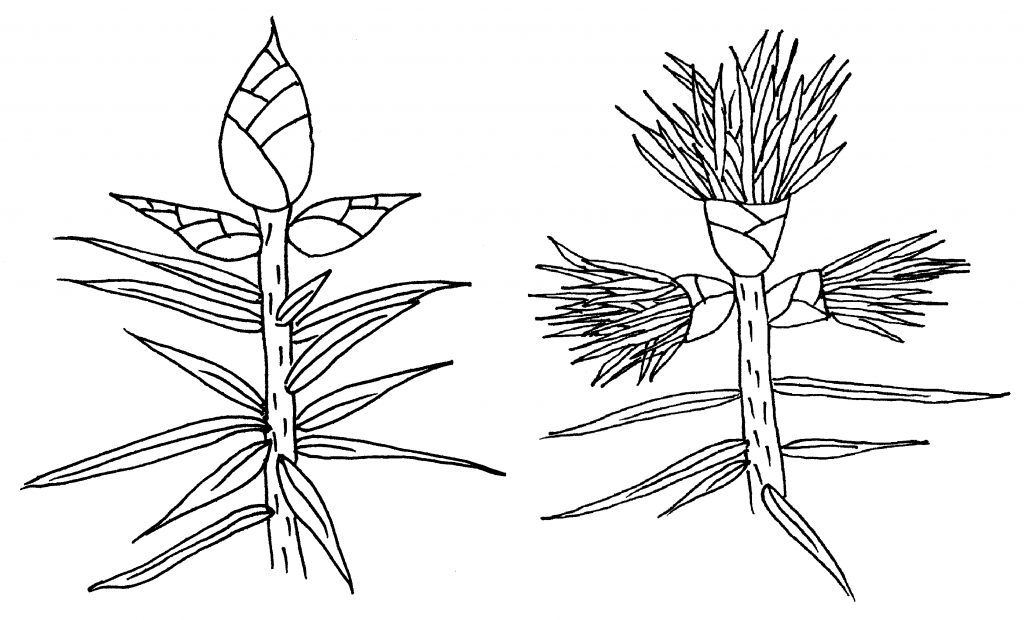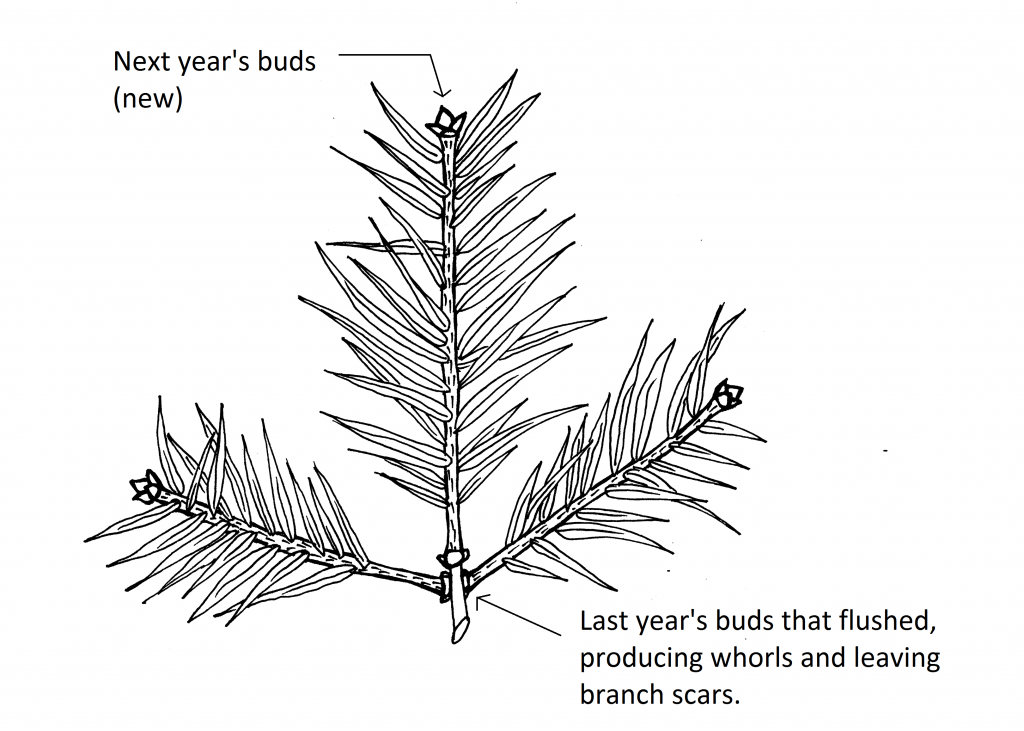23 4.2 Young trees
An approximate age for many young conifers can be determined by counting the whorls. Some trees, including most conifers growing in the Pacific Northwest, have determinate height growth. This means that they put on one “flush of growth” each year, and each year’s growth is determined by the previous year’s bud. The terminal and lateral buds at the tips of the tree break bud, or “flush” in the spring (Figure 4.2). The stems or “leaders” produced by these buds elongate until sometime in July, and then set new buds for the following spring.

A tree increases in height by the length of the new leader growth produced by the terminal bud. In addition, the lateral buds flush and produce a new whorl of branches at the base of the leader (old bud location) (Figure 4.3). This process is repeated every year. Therefore, each whorl of branches and the stem growth immediately above it (up to the next whorl) represent one year of growth.


